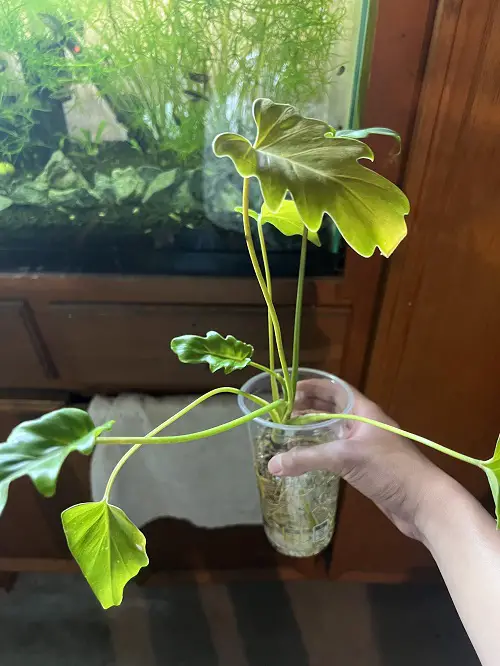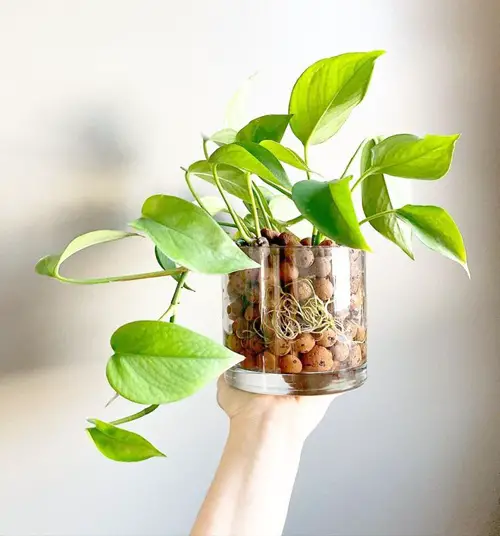Here are some of the best ways to grow houseplants without soil that will help to make them thrive in different growing mediums!
Are you wondering about the ways you can use to grow houseplants without soil? How about growing some of them in sand, and others in water. Or, maybe in a different substrate!
Check out Houseplants that Grow Without Soil
Ways to Grow Houseplants Without Soil
1. Water
Growing plants in water is the most preferred way after soil. This way, you can also control the spread and growth of the plant, while keeping them in any area of your home using bowls, vases, or any other container of your choice.
Simply place the plant in water, and ensure you change the medium every 5-7 days or whenever it becomes cloudy. Adding half a teaspoon of liquid fertilizer every 5th-6th water change will be more than enough to provide a boost in the growth!
Anthuriums, calatheas, devil’s ivy, monstera, philodendrons, and peace lily are some of the best plants for this!
2. Lightweight Expanded Clay Aggregate (LECA)
LECA is made from baked clay pellets, which are essentially volcanic rocks.
What makes it perfect for plants is its high porosity, thanks to its honeycomb-like structure, facilitating excellent aeration. It can also absorb water, slowly releasing it over time, which helps to maintain a consistent moisture level – crucial for plant growth.
This medium also has a neutral pH, which means it does not alter the soil’s acidity or alkalinity. This makes it suitable for almost every plant!
Orchids, Pothos, Anthuriums, Peace Lilies, Alocasia, Philodendrons, Monsteras, and Spider Plants are some great choices for this medium.
3. Sphagnum Moss
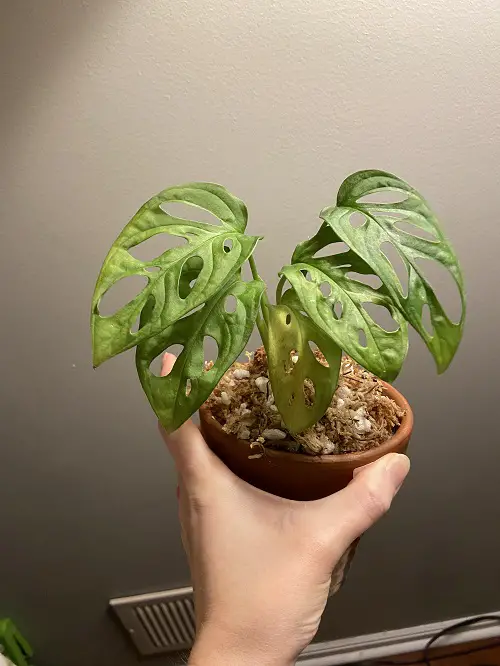
This lightweight growing medium can hold up to 20 times its weight in water – which makes sure the plants get a constant supply of moisture over time. It also prevents bacterial growth naturally, promoting a healthier environment for plants.
Thanks to its porous nature, sphagnum moss also allows for better air circulation for the roots.
Various Plant Cuttings, Orchids, ferns, mosses, Venus flytraps, and pitcher plants do well in the acidic and moist environment provided by sphagnum moss.
4. Air!
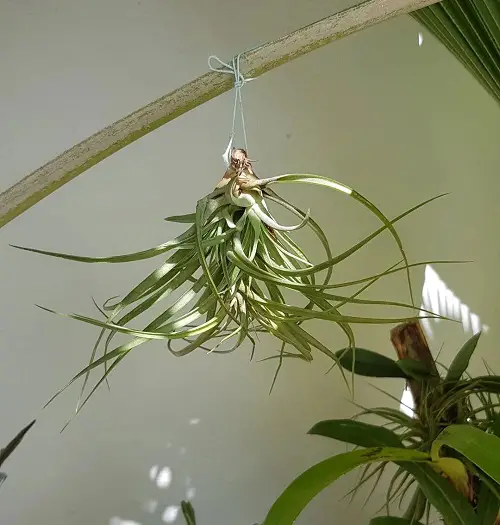
Air plants love to stay, grow, and thrive in just air! Yes, you read that right! They absorb moisture and nutrients from their surroundings and continue to live like this for years.
Secure these plants on driftwood, cork, or branches/poles using wire mesh/thread. Now, simply give them a spray of water every now and then—simple!
5. Coco Coir / Coco Peat
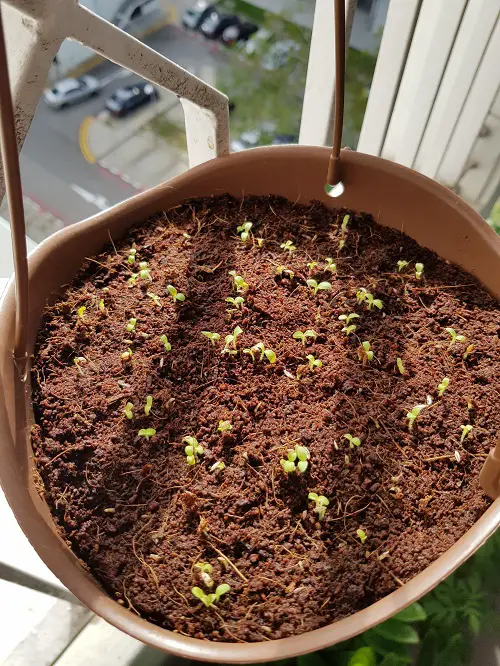
Coco coir/coco peat is made from coconut husks, which not only make it porous and enhance air circulation but also make it quite potent at holding water—the best of both worlds for any plant!
Simply use it as a pure growing medium in a pot – it works best for Succulents, Microgreens, Propagating cuttings, and Seeds.
6. Sand
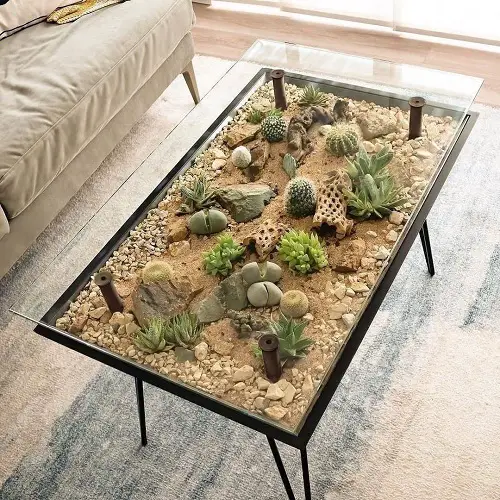
This might not sound doable, but you can grow succulents and cacti in sand. How, you may ask? Well, sand provides excellent drainage – preventing waterlogging, which is the number one requirement for these plants.
However, as sand lacks essential nutrients, adding organic matter like compost or coconut coir would be a good idea to ensure the plants thrive in the longer run.
Look at Succulents You Can Grow in Sand
7. Wooden Chips and Bark

Wooden bark and chips are great for retaining water while providing the essential airflow for the roots of plants. As they decompose slowly over time, they release essential nutrients into the soil, providing a slow and steady supply of organic matter.
Orchids are the best choices for this growing medium.
8. Block/Piece of Wood
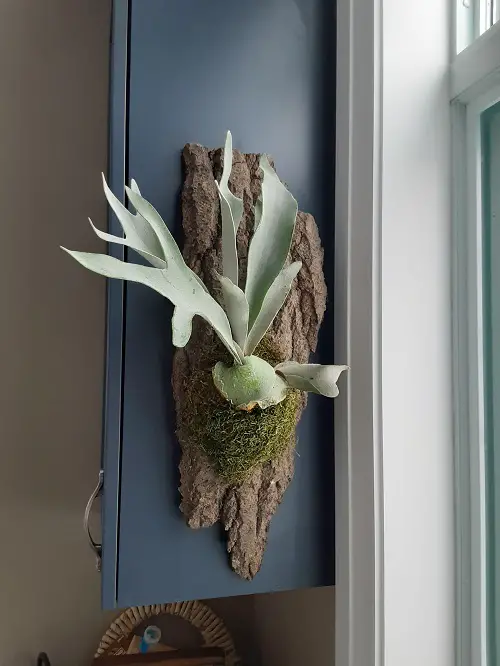
A block of wood can be surprisingly a growing medium for a plant like Staghorn fern. Why? Well, in its native habitat, it grows on other plants, and a piece of wood mimics that.
These ferns absorb water and nutrients primarily through their fronds and roots, meaning they would simply get them off the atmosphere while attaching to the piece of wood.
However, it would be a good idea to add a bit of sphagnum moss to create a bed on the wood before attaching the fern to it. After that, just keep on misting the plant, once in a few days, and it will thrive!


